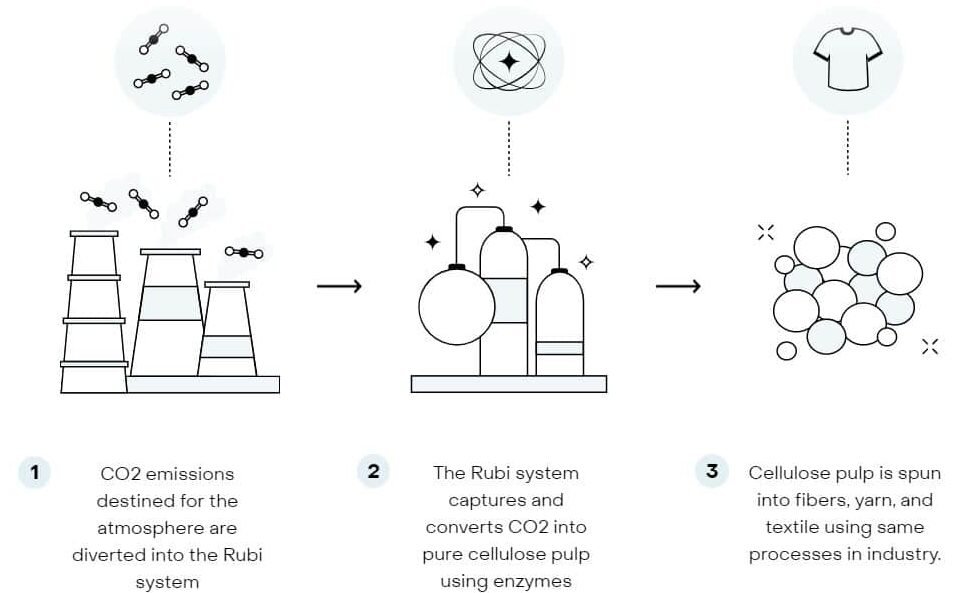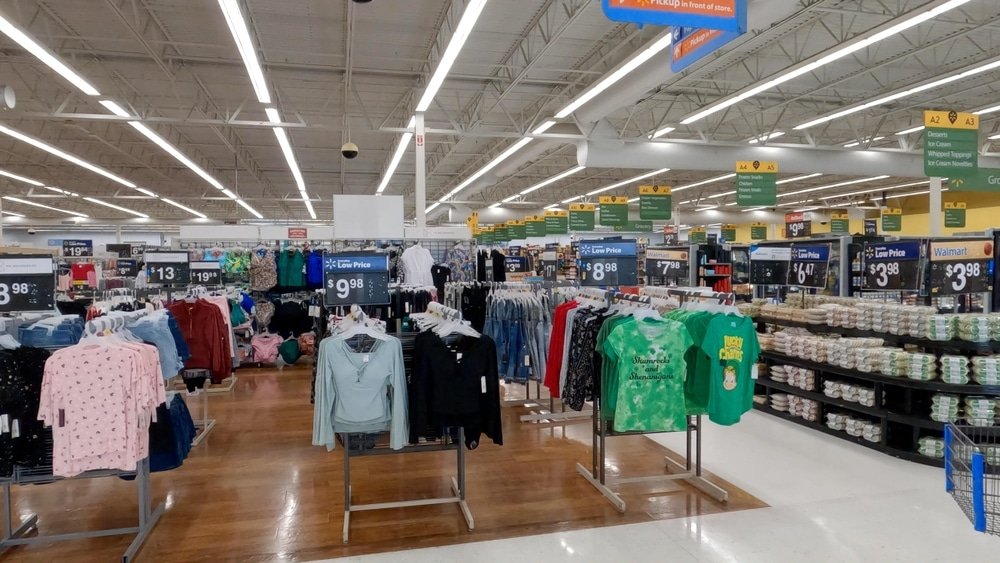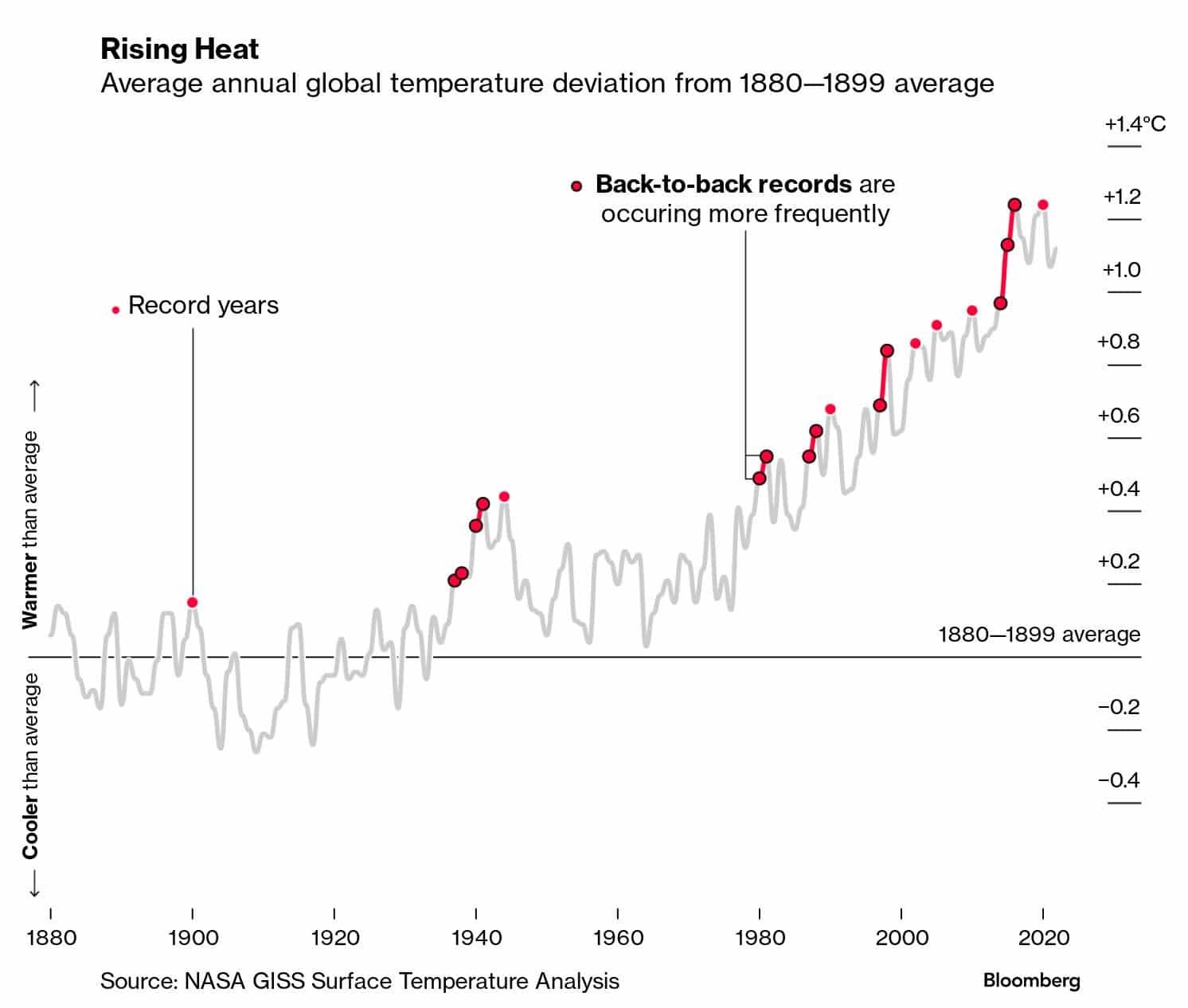Walmart Inc. teamed up with a California startup Rubi Laboratories to test technology that can turn carbon dioxide into clothes. The CO2 is captured from the retail giant’s supply chain.
The partnership between Walmart and Rubi will explore the innovative carbon capture technology that transforms CO2 from manufacturing waste streams into textiles. This initiative perfectly aligns with Walmart’s sustainability goals while presenting opportunities for eco-friendly and affordable apparel made from captured CO2.
Rubi is a symbiotic manufacturing company aiming to reinvent fashion supply chains through a proprietary biomanufacturing technology that works in harmony with the planet.
A Greener Way to Make Clothes
Climate experts believe that carbon capture technology can help prevent billions of tons of carbon emissions from entering the atmosphere. There are various technologies emerging today that capture CO2 from industrial plants and store the gas deep underground.
The carbon capture sector is in its early stages but projections show promising growth. For instance, BloombergNEF estimates that direct air capture, directly capturing ambient air from the atmosphere, alone can be a $1-trillion market in the next decade. Scalability remains the key challenge.
Other companies prefer to reuse the captured carbon instead of burying it to make other products that people use daily. This is known as the carbon capture, usage, and storage (CCUS) technology.
Rubi’s patent-pending carbon capture and transformation technology uses biochemical processes to convert CO2 to cellulose. This technology, which follows the idea of how trees use carbon dioxide to grow, is powered by enzymes that “eat” CO2 and produce lyocell yarn, a main component in making textiles.
Here’s how Rubi’s carbon transformation process works in three steps:

The goal is to look for a greener way to make clothes, says Walmart’s EVP of Sourcing, Andrea Albright. She further asserted the importance of the project in addressing their climate and sustainability goals, saying that:
“Walmart’s collaboration with Rubi could reimagine the apparel supply chain by leveraging technology to create textiles from carbon emissions. This technology could play an important role in our journey towards zero waste and zero emissions.”
The retail company company aims to reach zero emissions by 2040, ten years ahead of the Paris Agreement target. Part of this goal is to cut absolute Scopes 1 and 2 GHG emissions 35% by 2025 and 65% by 2030 from 2015 base year.
The retailer reported to achieve the following progress in its net zero targets. Between 2015 baseline and 2021, Walmart cut Scopes 1 and 2 emissions by 23% and also decreased carbon intensity by almost 41%, as measured by metric ton CO2e per $M revenue.
Walmart’s Progress on Operational Emissions (Scopes 1 & 2)
Walmart’s Giant Moves for Climate Goals
Walmart is the first company to work with Rubi Labs both for manufacturing and brand pilot projects. Their deal involves two major parts:
- 1st pilot: focuses on integrating the Rubi system into manufacturing facilities within Walmart’s supply chain to capture and convert carbon.
- 2nd pilot: performance testing of CO2-converted cellulose in a prototype apparel, focusing on accessibility and affordability for the mass market. After testing, the partners plan to have a sample apparel collection.
Walmart is among many Fortune 500 companies committed to reduce carbon emissions to achieve climate goals. The giant retailer has been serious in reaching sustainability goals by working with climate action leaders, suppliers, and customers to cut its emissions since 2005.
Walmart aims that its own operations – Scope 1 and 2 emissions – will be run 50% by renewable energy by 2025 and 100% by 2035. The company is also addressing its Scope 3 emissions (supply chain emissions) by launching the Project Gigaton in 2017.
The project’s goal is to avoid or reduce 1 billion metric tons of carbon emissions by 2030. As of 2022, over 5,200 suppliers are participating in the project and reported to achieve a total of 750 million Mt of CO2.
Scaling up these goals and achievements are critical as the world continues to experience record-breaking heat levels.
According to the United Nations estimates, the current emissions-cutting policies by governments worldwide are still not enough to limit global warming and would still likely increase global average temperature by about 2.8ºC by 2100. Recent reports of deadly heat-related events show how grave the effects of rising heat could be.
 What that means for companies is to take on massive and rapid efforts to reduce their planet-warming emissions.
What that means for companies is to take on massive and rapid efforts to reduce their planet-warming emissions.
Joining Walmart in the fight against this climate crisis are major fashion brands Lululemon and Nike.
Last month, the Canadian athletic brand Lululemon also partnered with a startup that uses enzymes to recycle plastics to recover nylon and polyester and use it to make new apparel. Undergoing the same carbon-cutting and sustainability initiatives, Nike has been using recycled materials in making its apparel and shoe collection.
Walmart’s move to address its supply chain emissions with Rubi’s help is a giant step towards its climate goals. Capturing emissions from its suppliers’ manufacturing facilities and using it to make new clothes can be both profitable and climate-friendly.
If successful, the innovative carbon capture system could revolutionize Walmart’s supply chain, making affordable clothing while mitigating carbon emissions.



